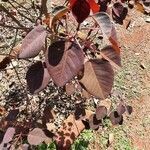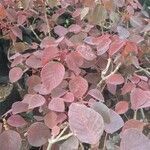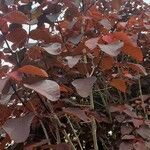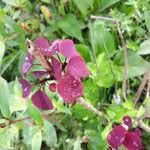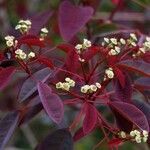Tree, head strongly branched, to 10 m, branches terete, articulate, glabrous. Leaves ternate (rarely alternate at some nodes); stipules obsolete; petiole 2-6 cm long, slender; blade ovate, 4-6 X 3-5 cm, green, glabrous or with scattered short hairs, the base rounded, sometimes obscurely peltate, the margin entire, the apex truncate to emarginate. Cyathia in terminal cymes, often forming showy panicles with up to 30 on each of 6-12 laterals at the tip of a branch, campanulate, ca 3 mm diam, the lobes broad, fimbriate and often white at their apices; glands 5(4), brown, the appendages larger than glands, white. Fruit not seen from Panamanian material; a Mexican collection (Pringle 6069 MO) has capsules broadly ovoid, to 6 mm diam, sparsely pubescent; seed ovoid, ca 2.5 mm long, somewhat angled, the surface deeply pitted with pits ? in rows and occasionally also warted, ecar-unculate.
More
This popular, small shrubby tree, originating from Central America produces vast numbers of seedlings and naturalizes easily. It grows to ± 3 m. high.. It is prized for its ornamental foliage, its leaves being purplish brown and broadly ovate with long petioles.. The inflorescences are relatively inconspicuous, produced as small, few-branched cymes consisting of tiny cyathia bearing purplish glands with creamy lobed petaloid appendages.
Can be grown by cuttings or seedlings. Seeds needs soaking.
